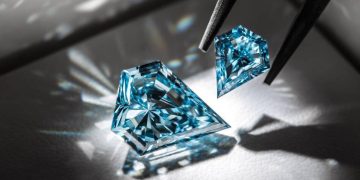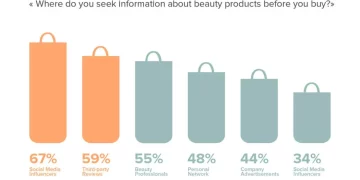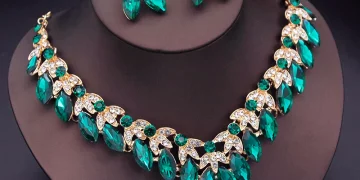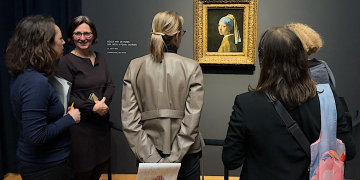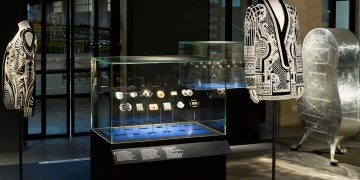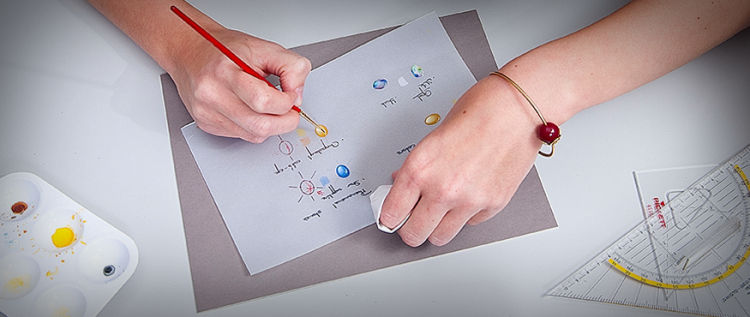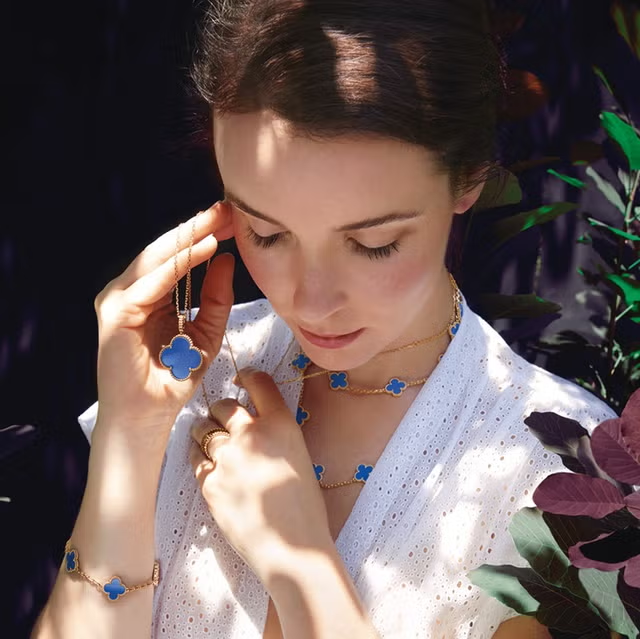Abstract
In an era dominated by individual expression and personal branding, customization is a powerful tool that allows consumers to curate unique, meaningful pieces of art that resonate with their identity. Custom jewelry, a category that offers both creativity and craftsmanship, has become a cornerstone of this personalized movement. As the world moves toward a more bespoke, individualized approach to fashion and design, custom jewelry is poised to lead the charge in reshaping how consumers approach style and self-expression. This article delves into the rise of custom jewelry, exploring how it taps into the growing demand for personalization, its influence on fashion trends, and its future potential as the guiding force of the next wave of individualized style.
1. Introduction
1.1 The Evolution of Personalization in Fashion
Personalization has become a defining trend in contemporary consumer behavior. In a world of mass production and mass consumption, consumers increasingly desire products that are tailored to their tastes, values, and identities. This desire is not limited to clothing but extends to every aspect of personal style, including accessories like jewelry.
Jewelry, long seen as a means of expressing wealth and status, is now viewed more as an extension of personal identity and story. From engraved rings to custom-made necklaces, the evolution of jewelry design has allowed individuals to wear pieces that speak to their personal experiences, cultural heritage, or emotional milestones.
In this context, custom jewelry represents the next frontier of personal expression. By offering a blend of craftsmanship, creativity, and emotional significance, custom jewelry allows wearers to break free from standardized, mass-produced options and create something entirely their own.
2. The Rise of Custom Jewelry
2.1 The Demand for Personalized Pieces
The growing popularity of custom jewelry can be attributed to several factors, most notably the shift toward more individualized fashion choices. Consumers today are not simply seeking jewelry that complements their outfit but are increasingly searching for pieces that reflect their unique tastes, life stories, or milestones.
- Emotional Significance: Custom jewelry often carries sentimental value, whether it’s a family heirloom remade into a modern design, a ring commemorating a special event, or a necklace that represents a personal symbol. This emotional connection is what makes custom jewelry so compelling—it’s not just a decorative item but a piece of personal history.
- Self-Expression and Identity: As consumers place more value on self-expression, jewelry has become an essential medium for communicating one’s individuality. Custom jewelry allows individuals to have a direct hand in the creation process, choosing materials, designs, and motifs that best represent their personality and style. It also offers a solution to the growing desire to move away from mass-market, cookie-cutter fashion trends.
2.2 The Digital Revolution and Custom Jewelry
Technology has played a crucial role in the rise of custom jewelry. The internet, combined with advances in digital design tools, has made it easier than ever for consumers to design their own jewelry pieces from the comfort of their homes. Platforms like Etsy, Brilliant Earth, and James Allen provide user-friendly design interfaces that allow customers to choose everything from the shape of their ring to the type of metal and gemstone used.
- 3D Printing: The emergence of 3D printing technology has further revolutionized the custom jewelry market. Designers and consumers can now create intricate, personalized designs that would have been nearly impossible with traditional manufacturing methods. This technology not only opens up a world of design possibilities but also makes the process more affordable and efficient, allowing for quicker turnarounds.
- Virtual Design Tools: Many jewelry brands are now offering virtual design consultations, where consumers can interact with designers through video calls, share ideas, and experiment with various designs in real-time. Augmented reality (AR) is also being incorporated into the design process, allowing users to visualize how the final product will look on their bodies before committing to a design.
3. Custom Jewelry as the Ultimate Expression of Personal Style
3.1 Moving Beyond Trends
In the fashion industry, trends tend to dominate for a few seasons before fading into obscurity. Custom jewelry, however, is inherently resistant to the limitations of seasonal trends. Since each piece is made to order and personalized for the individual, it transcends short-lived fashion cycles and instead speaks to timelessness.
- Timeless Pieces with Personal Meaning: Unlike trendy jewelry that may lose its appeal over time, custom jewelry is designed to be meaningful and lasting. A custom piece can be passed down through generations, becoming an heirloom that carries with it the stories of the family or the individual who wore it.
- Uniqueness Over Conformity: Custom jewelry allows consumers to step away from the homogenized aesthetic that mass-produced jewelry often offers. Rather than conforming to what’s popular or fashionable at the moment, consumers can create jewelry that aligns with their own unique aesthetic, culture, or experiences. This shift marks a departure from the conventional and signals a broader cultural trend toward uniqueness and authenticity in fashion.
3.2 Custom Jewelry and Sustainability
Another key factor in the rise of custom jewelry is its alignment with the sustainability movement. Consumers are increasingly aware of the environmental and ethical impacts of their purchases, particularly in industries like fashion and jewelry, which have long been associated with unsustainable practices.
- Ethical Sourcing: Many custom jewelry brands are dedicated to sourcing materials responsibly. Whether it’s using recycled metals or lab-grown diamonds, custom jewelers offer consumers the opportunity to make more conscious, ethical purchasing decisions.
- Sustainable Practices: Custom jewelry also helps reduce waste associated with mass production. Since each piece is made to order, there is less overproduction and fewer resources are wasted. This is particularly appealing to consumers who prioritize eco-conscious choices in all aspects of their lives.

4. The Future of Custom Jewelry: Leading the Wave of Personalization
4.1 The Growth of Direct-to-Consumer (DTC) Jewelry Brands
As consumers continue to demand more personalized, unique products, the direct-to-consumer (DTC) model is expected to drive the future of custom jewelry. DTC jewelry brands like Mejuri, Catbird, and Monica Vinader have capitalized on the demand for personalized, high-quality jewelry by offering bespoke options and a more transparent, customer-focused approach to purchasing.
- Transparency and Accessibility: By cutting out middlemen, DTC brands can offer greater transparency in terms of pricing, materials, and the overall design process. Customers can communicate directly with designers, receive quotes for custom designs, and even track the progress of their jewelry from creation to delivery.
- Affordable Customization: The rise of DTC custom jewelry brands has also made personalized jewelry more accessible. With lower overhead costs and a direct connection with consumers, these brands can offer customization options at a more affordable price point than traditional luxury jewelers.
4.2 The Role of Technology in Shaping Custom Jewelry’s Future
Advances in technology will continue to play a crucial role in the future of custom jewelry. New tools and platforms are making it easier than ever for consumers to design, customize, and receive personalized jewelry pieces that meet their exact specifications.
- AI and Machine Learning: Artificial intelligence (AI) and machine learning could soon revolutionize the custom jewelry experience by offering consumers personalized design recommendations based on their preferences, body types, and past purchases. These technologies could help streamline the design process and make it even easier to create a one-of-a-kind piece.
- Augmented Reality (AR) and Virtual Try-Ons: The integration of AR technology into the custom jewelry design process will allow consumers to virtually try on pieces before making a purchase. This will provide a more immersive, interactive experience and help consumers make informed decisions when it comes to their personalized designs.
- Blockchain and Provenance Tracking: Blockchain technology could play an important role in the future of custom jewelry, particularly in ensuring the provenance and ethical sourcing of materials. By tracking every step of a piece’s journey from raw material to finished product, consumers can verify the ethical and sustainable practices behind their custom jewelry.
5. Conclusion
Custom jewelry is leading the way in the growing demand for personalized, individualized style. As consumers continue to seek out pieces that reflect their unique identities, emotions, and values, the custom jewelry market is poised for significant growth. This trend is not just about accessorizing but about creating a personal narrative and wearing one’s story. With the increasing influence of technology, direct-to-consumer business models, and a strong push for sustainability, custom jewelry will undoubtedly play a central role in shaping the future of personalized fashion.
In an age where individuality and self-expression are more important than ever, custom jewelry offers a rare opportunity for consumers to wear something truly meaningful—something that is entirely theirs. As this movement grows, it will undoubtedly set the stage for the next wave of fashion: one where personalization and individuality are not just trends but the defining characteristics of style.



